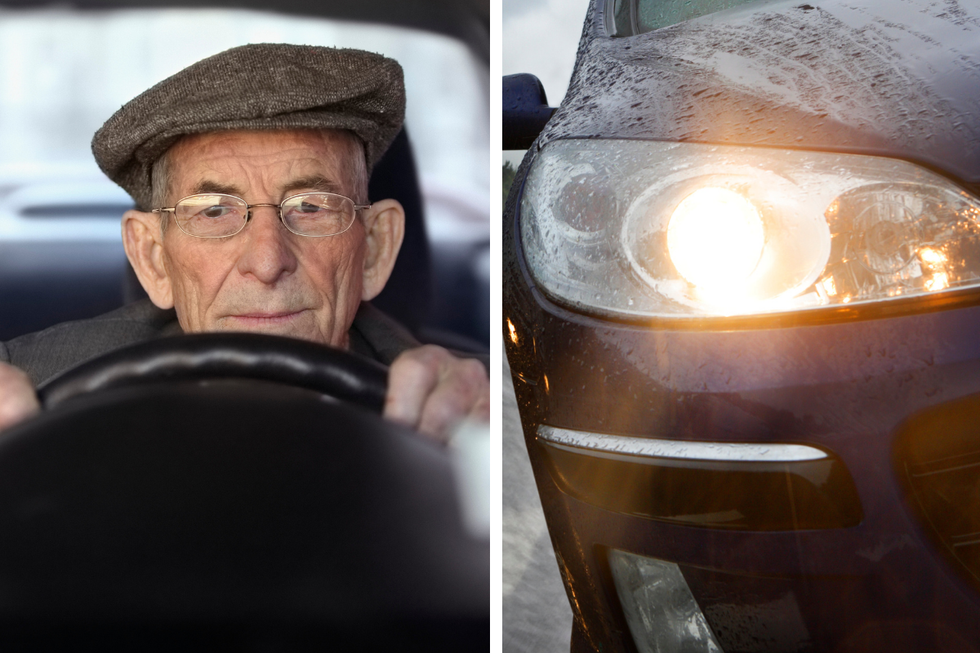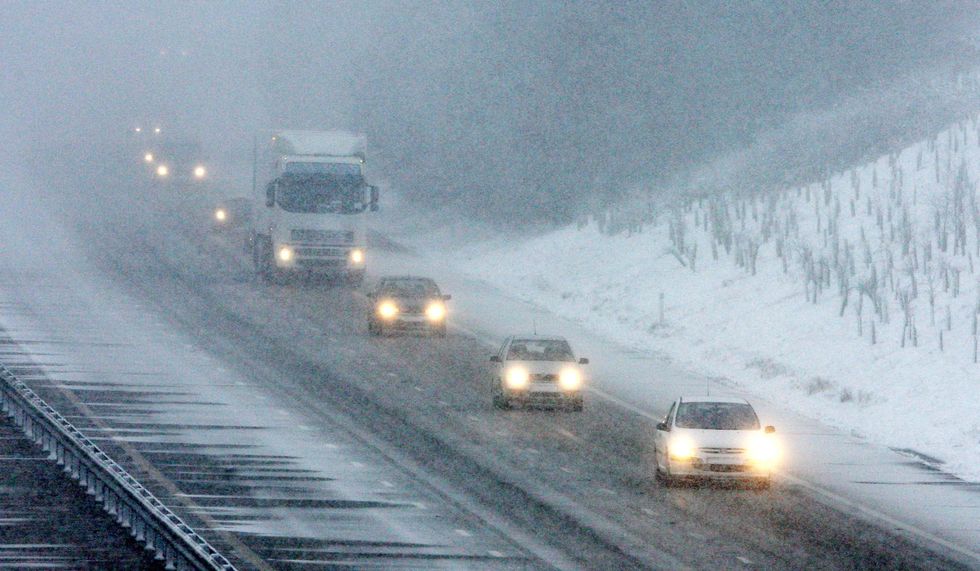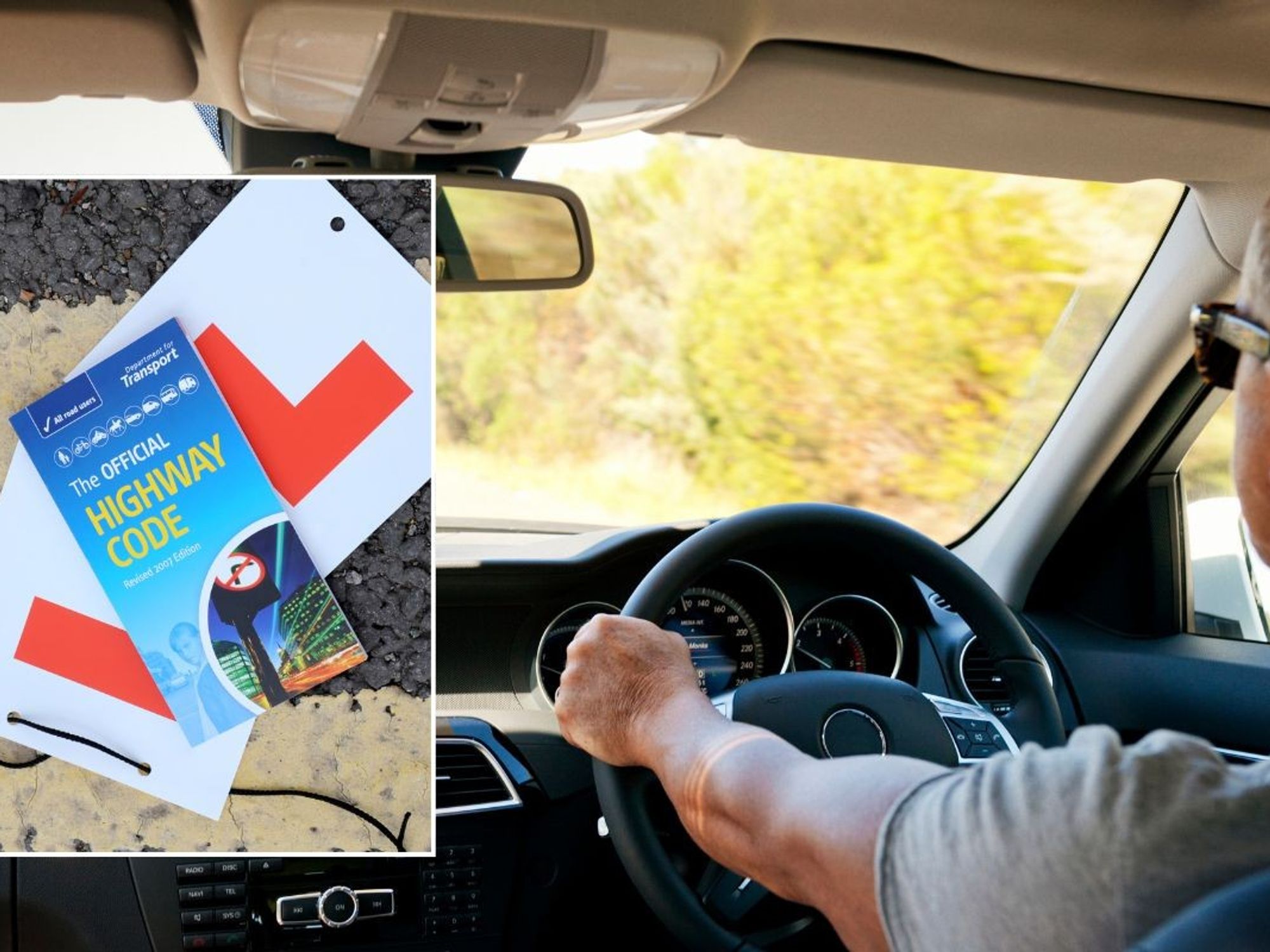'Older drivers are likely to be disproportionately affected by headlight glare'
Don't Miss
Most Read
Trending on GB News
Elderly drivers are being put at risk from people with bright headlights as experts call on the Government to introduce new motoring laws.
Around 85 per cent of all drivers said they were affected by headlight glare, with many believe that the problem is getting worse.
Nine in 10 drivers think at least some car headlights on the road are too bright, with 28 per cent saying the majority of cars on the road are too distracting with their lights.
Experts have suggested that elderly drivers may be being put more at risk because they get dazzled by high beams.

Experts are calling on the Government to conduct research into headlights dazzling drivers
GETTY
Previous research has shown that older motorists avoid driving at night or during darker hours in the winter.
This could have further knock-on effects for drivers as they may rely on their vehicles to stay active and mobile, which may take a massive hit if they make the decision not to drive when it’s dark.
A third of drivers say they have to slow down considerably until they can see clearly again after being dazzled, while a similar proportion believe that some headlights could cause accidents.
Shockingly, five per cent of these drivers state they have nearly been involved in a collision themselves.
Mike Bowen, Director of Knowledge and Research at the College of Optometrists, said laws need to be introduced to help drivers avoid being dazzled when at the wheel.
He added: “The results from this research by the RAC are helpful to inform our understanding of how changes in vehicle headlight technologies may be affecting both the functional vision of young and older drivers, and their visual comfort, when driving at night.
“Older drivers are likely to be disproportionately affected by headlight glare, so may be more likely to experience difficulties or to decide not to drive at night at all.
“We urge the Government to commission more technical and clinical research to have a better understanding of this issue and what should be done to ease the effects of dazzling headlights.”
Rules 113 to 116 of the Highway Code outline that drivers should use headlights at night, except on a road that has lit street lighting.
People must also use their headlights when visibility is seriously reduced, although it also outlines that drivers must not use any lights in a way that “dazzle or cause discomfort to other road users, including pedestrians, cyclists and horse riders”.
Drivers must use headlights when visibility is seriously reduced, generally if they cannot see for more than 100 metres, but must turn off the front or rear fog lights when visibility improves.
There has been an average of 280 collisions a year where dazzling headlights were a contributory factor since 2012, according to Government data.
The RAC has raised the issue with the Department for Transport and Baroness Hayter from the House of Lords to make drivers’ concerns known to the Government, with further meetings planned this year.
Rod Dennis, RAC spokesperson, said: “We urgently need the Government to take a closer look at the issue, ideally by commissioning an independent study to understand what’s causing an increase in reports of dazzling and, most importantly, what can do be done to keep drivers safe.
LATEST DEVELOPMENTS:

The Highway Code states that drivers should turn on their headlights when visibility is seriously reduced
PA
“With spring still a long way off, there’s a good chance many people will do most of their driving in darkness over the next few months and, according to our research, that means an awful lot of drivers will experience the discomfort and even danger that comes from being dazzled by headlights.”
Similarly, Baroness Hayter added: “The RAC has demonstrated that some car headlights can dazzle, causing a danger for oncoming drivers. We know drivers in other countries share this concern.
“So, Government should take action now to be on the side of road safety and ensure everyone keeps to the Highway Code, which states drivers ‘must not use any lights in a way which would dazzle other road users’.”









